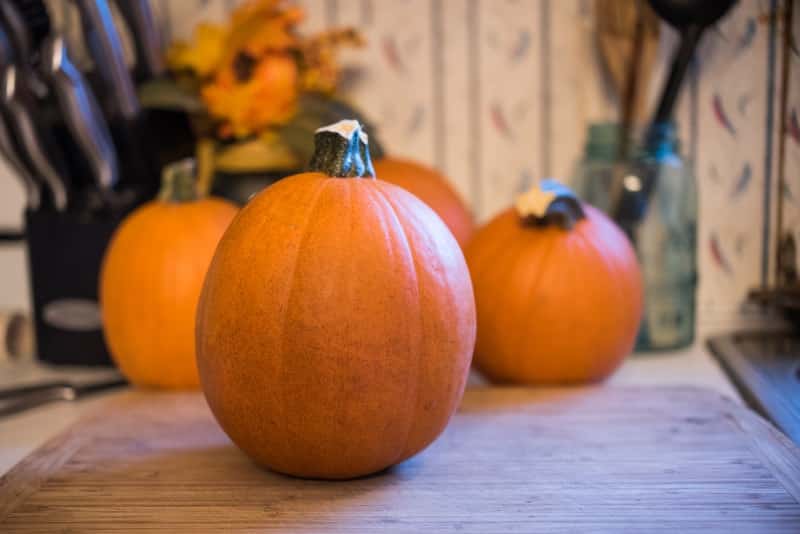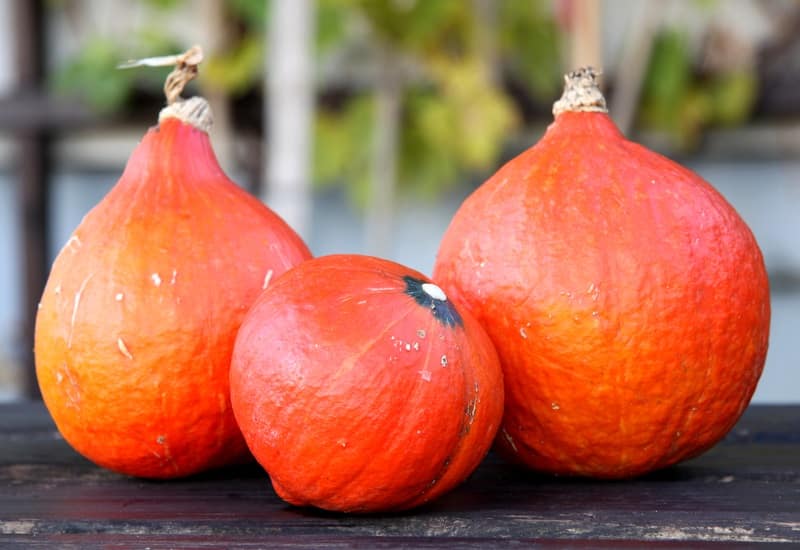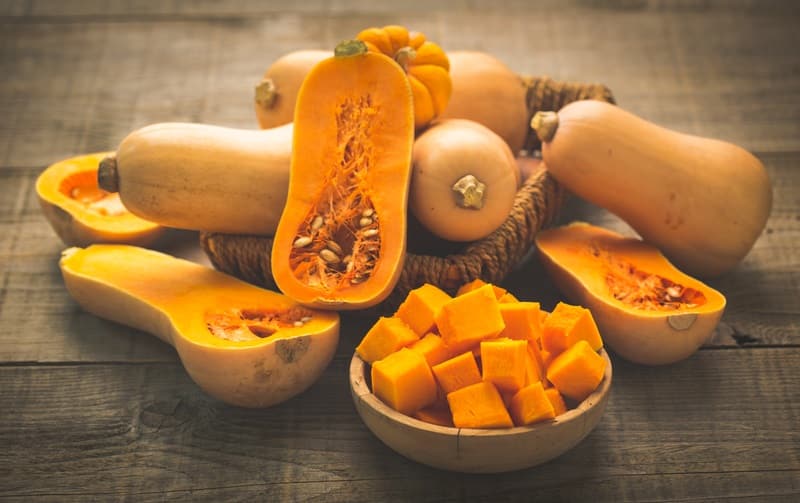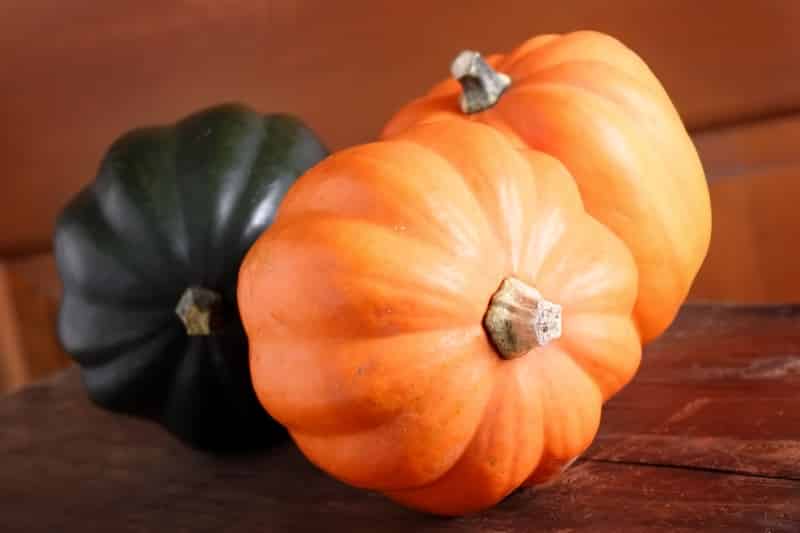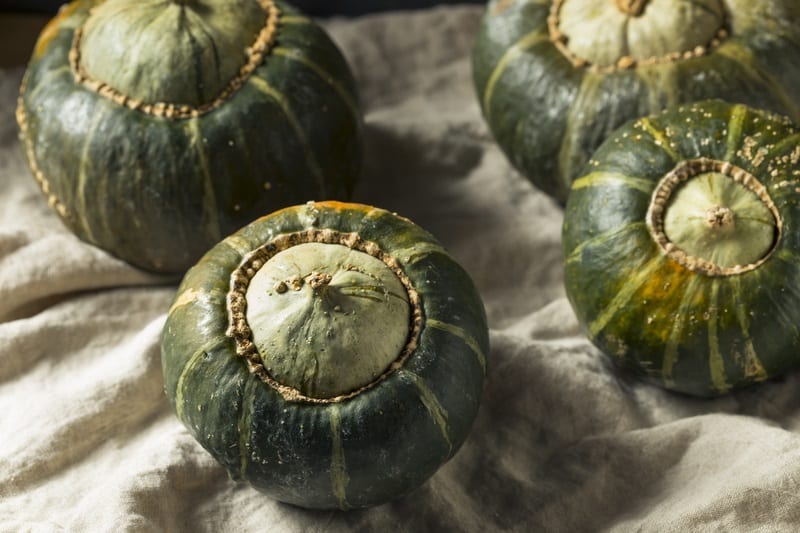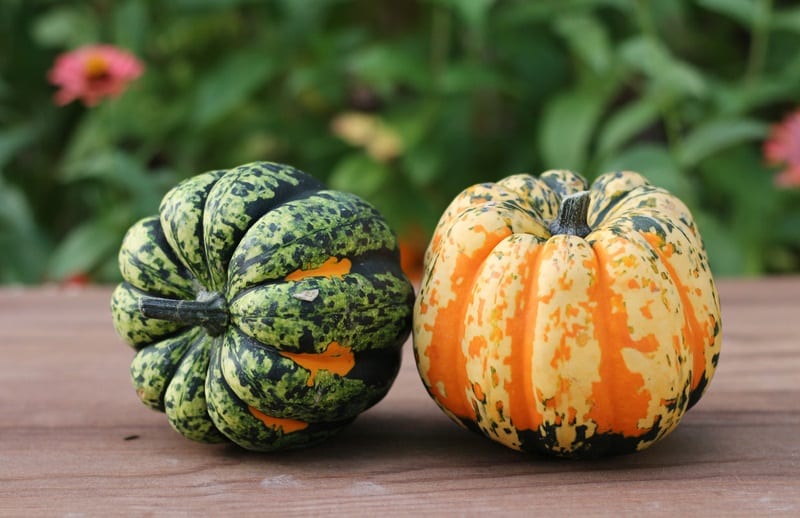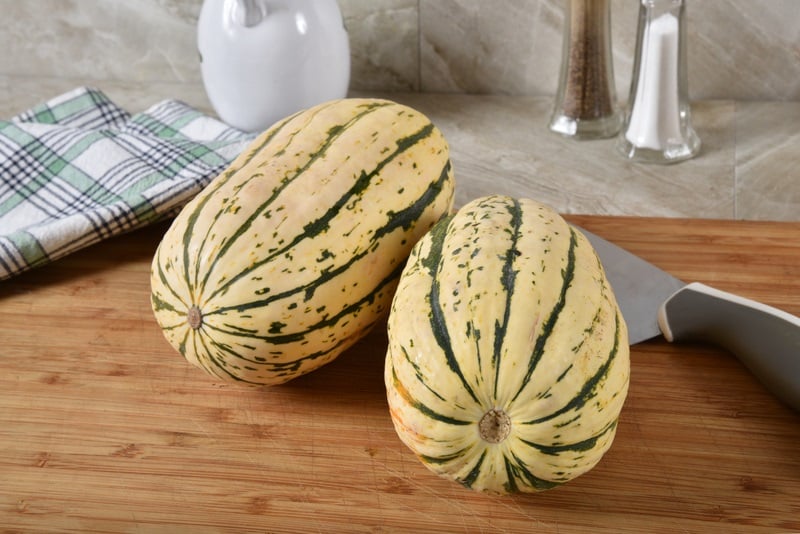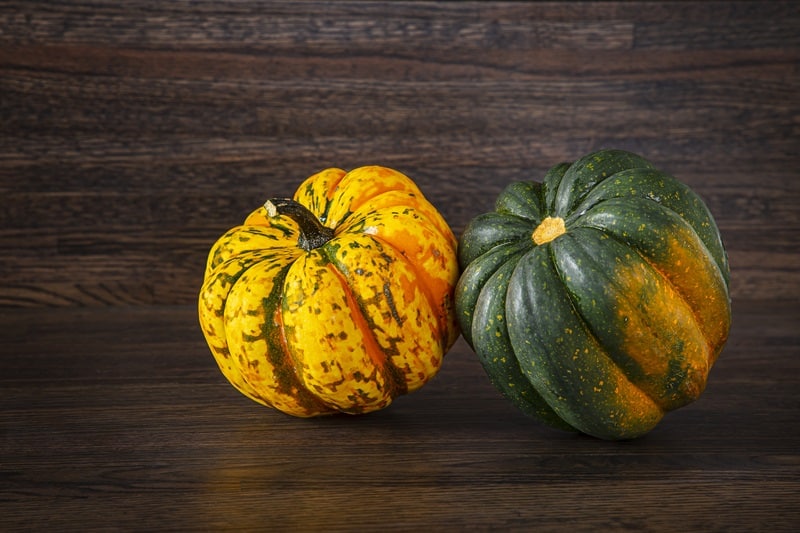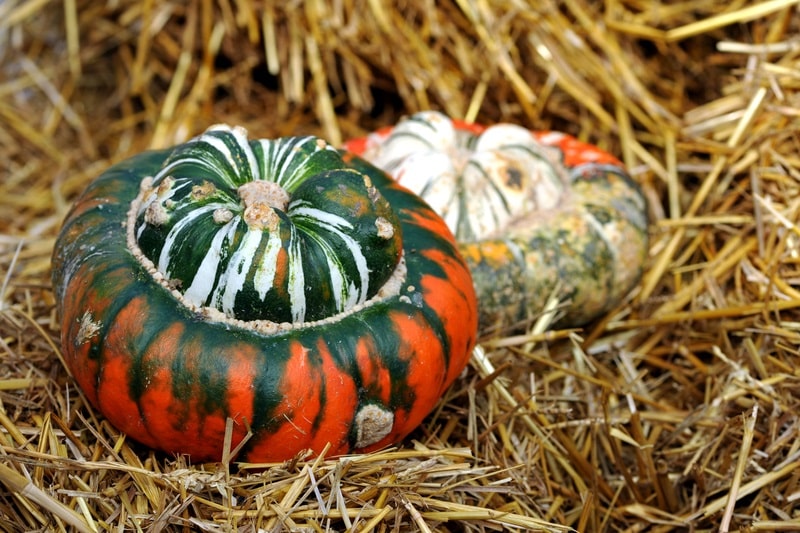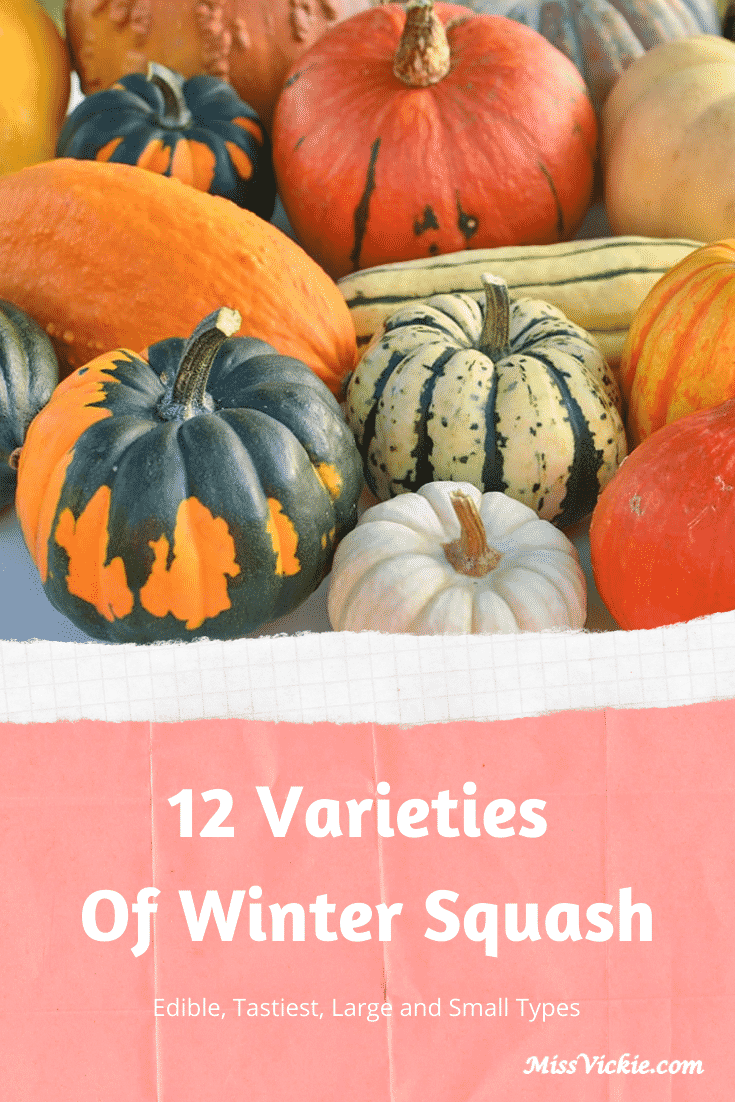
Squashes come in two broad varieties – summer and winter. This refers to the time when they are ripe and available in the markets and stores. Nothing screams fall like the arrival of winter squash at grocery stores and farmer’s market stands.
Unlike summer squashes, winter squashes usually have thick rinds that are hard to cut into but it is this tough exterior that allows the squash to keep for extended periods.
Though they are from the same family of veggies, summer squashes taste better when they’re harvested young while winter squashes are typically harvested at full maturity.
Winter squashes are healthy (vitamins A and C, fiber, potassium, and more), they taste delicious and are versatile enough that they can be prepared in a range of ways and incorporated in different dishes whether as a side dish, in stews, or baked into cakes and pies.
Pressure cooking winter squash
Because of their dense flesh and thick skin, winter squash is the perfect vegetable for pressure cooking.
Depending on the variety of squash you select, its weight, age, and the thickness of the skin, cooking times for winter squash vary. Like all varieties of produce, winter squashes have different flavor profiles but you should expect them to be sweeter and denser than their summer relatives.
Varieties of Winter Squash
1. Kabocha Squash
Kabocha is the Japanese word for squash, which explains why it is commonly referred to as a Japanese pumpkin. Kabocha delivers a nutty and earthy flavor that has a little sweetness and a touch of chestnut.
The flesh of Kabocha squash is typically deep orange and its slightly sweet flesh has a stickiness when cooked that’s reminiscent of sweet potato. Kabocha squash has a base that points out and is not in like most squashes.
Kabocha squash has a smooth, dark green exterior with pale green stripes. This squash can be baked, roasted, steamed, or incorporated as a substitute in any recipe that calls for the use of pumpkins or sweet potatoes.
2. Sugar Pumpkin
Sugar pumpkins come in an array of colors but they are usually smooth, round, and medium-sized. The best sugar pumpkins to use are the small ones so you want to avoid using sugar pumpkins that are bigger than 10 pounds.
Choose one that feels heavy for its size and has no major cuts, bruises, or soft spots. Sugar pumpkins have a rich, buttery, sweet taste and a smooth texture. This makes them perfect for pumpkin puree and pies.
3. Red Kuri Squash
Red Kuri squash is also commonly referred to as uchiki kuri squash, red Hubbard, potimarron, or orange Hokkaido squash. “Kuri” is Japanese for chestnut. Like many varieties of winter squash, red Kuri squash has thick, orange skin and resembles a pumpkin.
Similar to other Hubbard squashes, red kuri is lopsided and teardrop-shaped. The flesh of red Kuri squash is firm and has a delicate, chestnut flavor that is delicious when paired with butter and an assortment of herbs.
Because they are difficult to peel, these squashes are often cooked with their skin on. Once cooked, the skin becomes soft and edible. Try cutting them into wedges and roasting or using the creamy yellow flesh for soup.
4. Butternut Squash
Butternut squash is perhaps one of the more popular types of winter squashes. Butternut squash is typically pear-shaped with a pale orange creamy exterior. Butternut squash is also easily distinguished by its long, slim neck and spherical, bulging bottom, which is where the seeds are housed.
Its flesh is orange-yellow and closely resembles sugar pumpkins. Because it is not stringy, it is perfect for pureeing and using in thick soups. It is also sweet and delicious when roasted.
5. Acorn Squash
Acorn squashes are small and round with a dark green, dull rind that features orange markings. The rind of the acorn squash should not feature too many orange markings; if it does, it means that the acorn squash is old, tougher, and has more fiber.
Acorn squash has yellow-orange flesh that delivers a nutty and mildly sweet flavor that is ideal for sautéing, baking, steaming, and roasting.
6. Buttercup Squash
Not to be confused with butternut squash, buttercup squash has a green exterior that features light green stripes. Buttercup squashes also have an easily recognizable round, the grey ridge at the bottom.
Unlike other winter squashes, the skin of buttercup squash is inedible, tough, and hard to peel which is why it is often baked or microwaved first to soften the skin.
Buttercup squash has bright orange flesh that delivers a delicate flavor that is sweeter than most types of squashes. It is smooth and not at all stringy when cooked.
A simple, delicious way to cook it is to cut it, skin and all, into thin wedges, coat it with olive oil and salt, drizzle it with a little maple syrup, and roast it until soft and caramelized.
7. Carnival Squash
Carnival squash is created by crossing acorn squash with sweet dumpling squash. The carnival squash, as the name suggests, has a colorful, patterned exterior made up of different stripes and patterns of yellow, cream, orange, and green with deep grooves.
The flesh of carnival squash has a flavor that is similar to butternut squash and is best roasted before being added to stews, soups, and risottos.
8. Delicata Squash
Delicata squash is also commonly referred to as Bohemian or sweet potato squash. Delicata squash has a cylindrical shape and comes with pale yellow skin that features green stripes. The skin is thinner than most other types of squashes which makes it one of the easier types to peel.
However, you can leave the skin on to roast it. When prepared, the orange flesh has an earthy flavor that is similar to that of sweet potatoes. Most recipes suggest roasting these squashes, but they are also good when stuffed.
9. Hubbard Squash
The Hubbard squash is one of the larger types of squash and it has bumpy skin that is quite hard. This allows it to keep for a long time without spoiling. Hubbard squash comes in different colors with the yellow Hubbard squash being the easiest to work with.
Many people avoid these delicious squashes because they are so difficult to peel, but you can cook them with the skin on and then scoop the flesh out afterward.
The flesh of Hubbard squash can be quite dry, making it perfect for use in stews, gratins, or anything with a bit of sauce in it. They aren’t as sweet as other squashes, so they work well when given a savory twist.
10. Sweet Dumpling Squash
Sweet dumpling squashes are small and come with whitish-yellow rinds with green furrows. Both the flesh and skin of sweet dumpling squashes are edible with the flesh producing a flavor that is similar to corn or sweet potatoes. They can be roasted, stuffed, or mashed with butter and a little nutmeg.
11. Turban Squash
Turban squash is large and colorful with bumpy skin that can range from yellow to green to orange. Turban squash has a turban-like cap situated on its blossom end which makes it perfect for decorating or using as a centerpiece. The flesh of turban squash is mild but sweet and pairs well with an array of different foods.
12. Spaghetti Squash
Spaghetti squash is the perfect low-calorie alternative to pasta. Spaghetti squash usually has a cylindrical shape with bright yellow rind. Once it is cooked, the flesh of spaghetti squash can be scraped off to create strings that are similar to noodles or spaghetti.
To Conclude
We hope our guide to winter squash will encourage you to try some that you haven’t tasted before. They’re all delicious and full of healthy things, so what are you waiting for?

